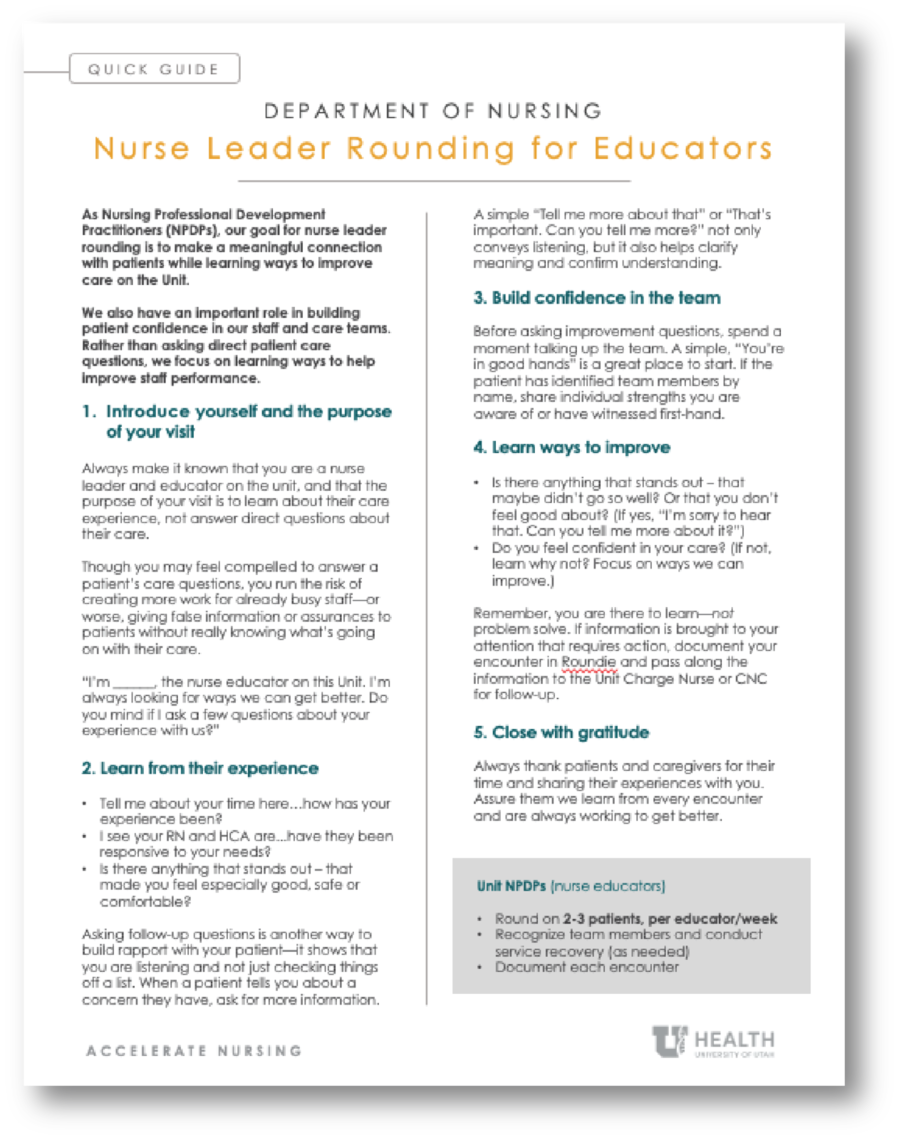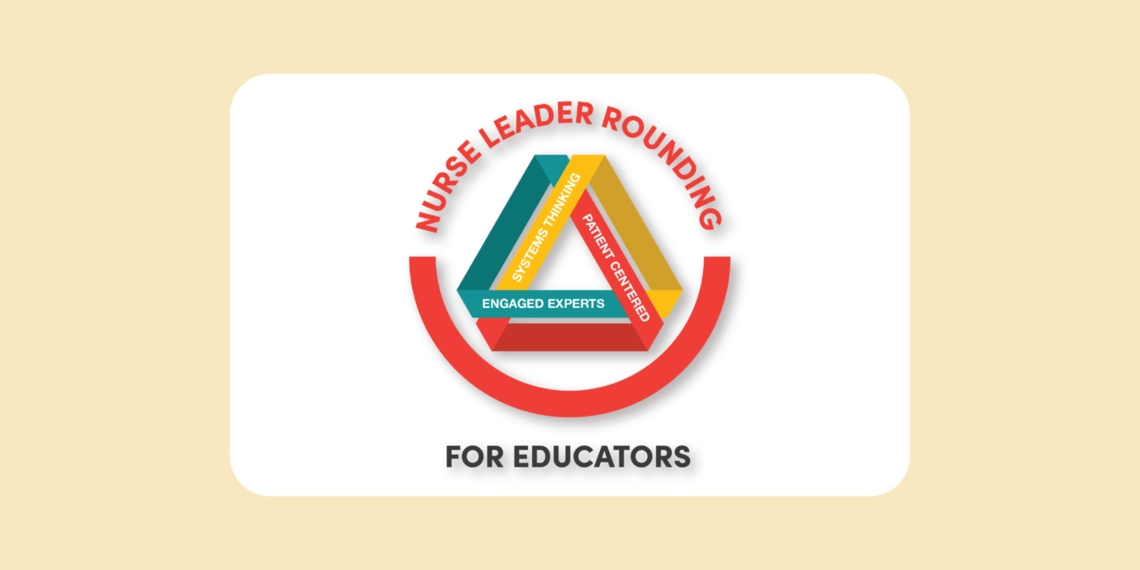Download Quick Guide

Download the Nurse Leader Rounding for Educators Quick Guide for an easy to share 1-page overview.
As Nursing Professional Development Practitioners (NPDPs), our goal for nurse leader rounding is to make a meaningful connection with patients while learning ways to improve care on the unit.
We also have an important role in building patient confidence in our staff and care teams. Rather than asking direct patient care questions, we focus on learning ways to help improve staff performance.
1. Introduce yourself and the purpose of your visit
Always make it known that you are a nurse leader and educator on the unit, and the purpose of your visit is to learn about their care experience, not answer direct questions about their care.
Though you may feel compelled to answer a patient’s care questions, you run the risk of creating more work for already busy staff—or worse, giving false information or assurances to patients without really knowing what’s going on with their care.
“I’m ______, the nurse educator on this unit. I’m always looking for ways we can get better. Do you mind if I ask a few questions about your experience with us?”
2. Learn from their experience
- Tell me about your time here…how has your experience been?
- I see your RN and HCA are...have they been responsive to your needs?
- Is there anything that stands out – that made you feel especially good, safe or comfortable?
Asking follow-up questions is another way to build rapport with your patient—it shows that you are listening and not just checking things off a list. When a patient tells you about a concern they have, ask for more information. A simple “Tell me more about that” or “That’s important. Can you tell me more?” not only conveys listening, but it also helps clarify meaning and confirm understanding.
3. Build confidence in the team
Before asking improvement questions, spend a moment talking up the team. A simple, “You’re in good hands” is a great place to start. If the patient has identified team members by name, share individual strengths you are aware of or have witnessed first-hand.
4. Learn ways to improve
- Is there anything that stands out – that maybe didn’t go so well? Or that you don’t feel good about? (If yes, “I’m sorry to hear that. Can you tell me more about it?”)
- Do you feel confident in your care? (If not, learn why not? Focus on ways we can improve.)
Remember, you are there to learn—not problem solve. If information is brought to your attention that requires action, document your encounter in Roundie and pass along the information to the unit charge nurse or CNC for follow-up.
5. Close with gratitude
Always thank patients and caregivers for their time and sharing their experiences with you. Assure them we learn from every encounter and are always working to get better.
Breanna Brannan
Kim Mahoney
When we talk about being patient-centered, systems thinkers, and engaged experts, nurse leader rounding checks every box. It fosters meaningful connection, deepens our understanding of our patients' experiences, and by sharing what we learn, Nurse Leader Rounding can help us improve as a system. Initiative co-sponsors Tracey Nixon and Mari Ransco outline what’s to come for Nurse Leader Rounding at U of U Health.
Expert communicators Emily Izzo and Bridgette Maitre share how to ask open-ended questions to encourage conversation and promote meaningful connection.
Shared governance is a decision-making model designed to empower the people who care for patients. Chief Nursing Officer Tracey Nixon explains what it is, how it impacts you, and what to expect in the coming months.
